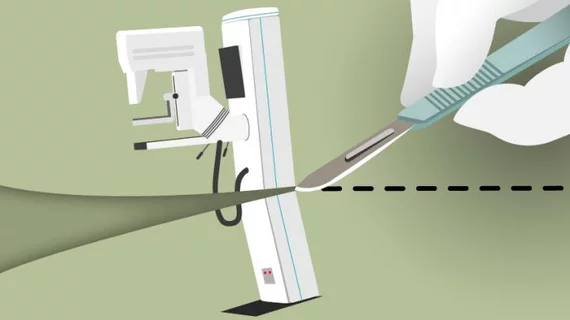Radiologists could double dip during mammography, further population health goals
Screening mammography presents a perfect opportunity for radiologists to double dip and also address smoking cessation and lung cancer, experts believe.
Investigators with Massachusetts General Hospital recently tested out this theory at a health center affiliated with the Boston-based institution. Their findings, published Jan. 10 in the Journal of the American College of Radiology, support the idea that, with simple changes, radiologists can add value to their practices while also furthering hospitals’ big-picture wellness goals.
“Screening mammography is an ongoing healthcare touch point for millions of women nationwide. As such, screening mammography visits represent opportunities for radiology practices to improve population health in ways beyond providing breast cancer screening,” wrote Gary Wang, MD, PhD, with the Department of Radiology at Mass General.
The Harvard-affiliated hospital tackled this goal by adding two sets of questions to routine patient intake questionnaires, exploring smoking history and interest in cessation. Between April and September 2018, Wang and colleagues found that about 11% of almost 2,000 women screened for breast cancer were also current smokers, while another 29% had kicked the habit.
Of the 200 still using cigarettes, about 26% requested referrals to tobacco cessation programs. About 8% asked for phone-based consultation and another 9% wanted it in person, while the bulk (almost 24%) requested information through mail. Further research is needed to determine whether women actually followed through and gave up smoking, but Wang et al. were encouraged by the number of women willing to engage over the phone or face to face, and that 9 out of 10 answered the smoking-related survey questions.
“These results indicate screening mammography visits may be leveraged to increase patient access to tobacco cessation resources,” they noted.

